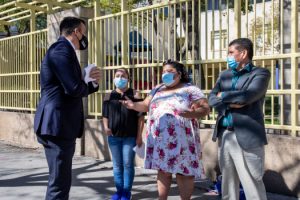Alberto, July 13.Credit…
Supported by
Mr. Monk is a photographer. Ms. Mejer Caso is a Mexican poet and visual artist.
- Feb. 25, 2021, 8:30 p.m. ET
SAN MIGUEL DE ALLENDE, Mexico — We Mexicans live behind masks of our own creation, even if in these portraits they are more a symbolic gesture of futility than protection.
Masks have long been a part of our cultural history, from the Lucha Libre masks to those worn for la Danza de los Viejitos, a traditional folk dance from the State of Michoacán.

They are like a garment that protects our vulnerabilities and allows us to express ourselves.
The city of San Miguel de Allende, Guanajuato, where we live, was quick to enact a strong response to the coronavirus and, as a result, the city has one of the lowest case rates in Mexico. But its citizens, already economically battered, have been depleted by the pandemic.
A young construction worker, preacher and butcher wear masks that are representative of the tools used to make a living, liberate us, and to fix things. A versatility borne out of hardship and necessity.
In a year where everything has been turned on its head, there appears to be nothing out of the ordinary about wearing a mask made of a chicharron, a tin heart or the husk of a tamal.
There can be beauty in resistance.
Russell Monk is a documentary and fine-art photographer. Valerie Mejer Caso is a Mexican poet, visual artist and translator. She is the author recently of the book, “Edinburgh Notebook.”
The Times is committed to publishing a diversity of letters to the editor. We’d like to hear what you think about this or any of our articles. Here are some tips. And here’s our email: [email protected].
Follow The New York Times Opinion section on Facebook, Twitter (@NYTopinion) and Instagram.
Advertisement









